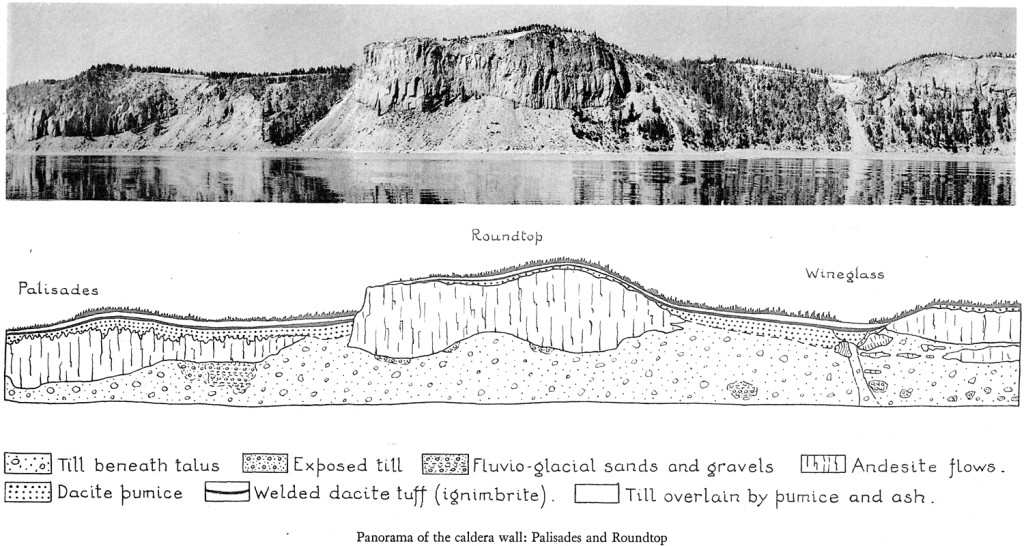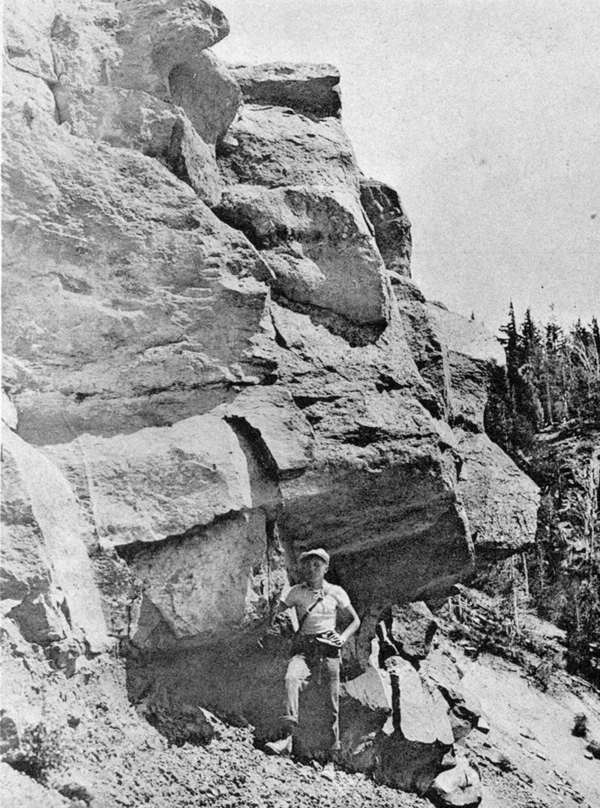The Geology of Crater Lake National Park, OregonWith a reconnaissance of the Cascade Range southward to Mount Shasta by Howell Williams
The Wineglass Welded Tuff and Associated Pumice
CLOSE to the top of the caldera wall, between Pumice Point and Grotto Cove, lies a sheet of peculiar dacite tuff underlain by coarse lump pumice. Throughout most of its length of 4 miles, the tuff makes a conspicuous & up to 50 feet in height (plate 15, figure I; plate 25). It forms the dark brim of the Wineglass and the brick-red layer near the top of the long slide above Grotto Cove.
Plate 25. Panorama of the caldera wall: Palisades and Roundtop
|
Plate 15. Fig. 1. Welded dacite tuff (ignimbrite) forming the brim of the Wineglass. The figure stands on coarse, incoherent lump pumice. Upward this grades rapidly into the cliff-forming welded tuff, the pronounced streaky banding of which simulates the flow banding of lava. |
From Diller’s account, it is plain to see that he was much intrigued and puzzled by the singular characters of this deposit. Though he referred to it as lava, he obviously had some doubt, for he notes that “it is altogether unlike the other flows of dacite and appears to be intermediate between them and tuff.” In another place he remarks that “it is decidedly like a tuff and might well be so considered were it not for the stringers of black glass intermingled with a reddish groundmass containing fragments of other material and imparting a decided fluidal structure to the mass” On the geological map, he designates it “tuffaceous dacite.” When Diller wrote, the manner of deposition of such material was quite unknown, and it is not surprising that he debated whether to call it tuff or lava. Rather, he deserves credit for recognizing that it presents features of both.



